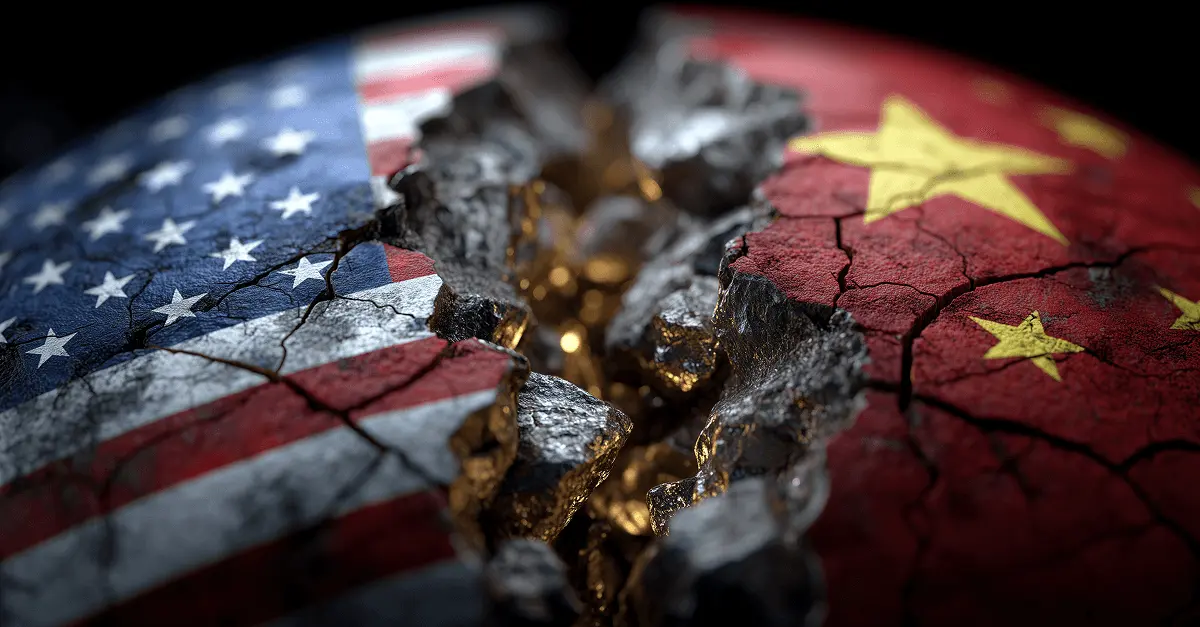The Three Biggest Supply Chain Threats Keeping Teams Awake at Night
Supply chain resilience expert Matthew Warren breaks down three of the most significant risks to manufacturers and their suppliers right now.

Article Highlights:
- In a wide-ranging conversation, Warren broke down what he sees as the three most pressing risks: tariff uncertainty, regulatory compliance, and critical mineral dependence.
- Tariffs are about far more than sticker price—they ripple across supplier networks in ways that are difficult to predict. It’s finding ways to combat those larger ripples that make the difference between just surviving and achieving long-term success.
- Warren notes that U.S. companies have been slow to prepare for regulations like the CSRD, the CSDDD, and the EUDR, often taking a wait-and-see approach and hoping directives would be delayed or downsized.
- The third threat Warren highlights is what he calls “mineral uncertainty”—a shorthand for geopolitical risk tied to critical raw materials.
When businesses think about supply chain risks, they often picture natural disasters, factory shutdowns, or shipping delays. But according to Matthew Warren, an expert in global supply chain resilience, the threats looming over companies today are far more complex—and far more disruptive.
In a wide-ranging conversation, Warren broke down what he sees as the three most pressing risks: tariff uncertainty, regulatory compliance, and critical mineral dependence. Together, these challenges are reshaping how companies must think about sourcing, production, and long-term strategy.

Tariff Uncertainty: “It’s Not Just About Price”
The first threat, Warren explains, is the unpredictability of tariffs.
“If you don’t know how much your products are going to cost at the border, you can’t accurately plan financially,” he says. “That uncertainty makes it hard to evaluate alternatives, and it creates market instability that isn’t simple to resolve.”
This goes beyond just paying more at customs. For companies shifting production from China to Vietnam or India, sudden tariff changes in those countries can put them “back to square one.” Even reshoring to the U.S. isn’t a simple fix.
“You’re still going to be tariffed on all the precursor items, many of which are imported from China,” Warren notes. “And for electronics especially, the supply chain is so complex that moving the final assembly back home doesn’t solve the problem.”
“You’re still going to be tariffed on all the precursor items, many of which are imported from China,” Warren notes. “And for electronics especially, the supply chain is so complex that moving the final assembly back home doesn’t solve the problem.”
For executives betting on reshoring as a cure-all, Warren believes they’ll be in for a surprise. That’s because he sees tariffs as being about far more than sticker price—they ripple across supplier networks in ways that are difficult to predict. It’s finding ways to combat those larger ripples that make the difference between just surviving and achieving long-term success.
Regulatory Compliance: “Companies Are Realizing How Much They Don’t Know”
The second challenge comes from a wave of new emerging regulations, especially in Europe. Warren points to frameworks like the Corporate Sustainability Reporting Directive (CSRD), the Corporate Sustainability Due Diligence Directive (CSDDD), and the EU Deforestation Regulation (EUDR).
“These have had long runways, and now we’re approaching the end of that runway—it’s time to implement,” he explains. “Companies are realizing there’s a lot of work they’ve never had to do before. They’re collecting data that’s completely unprecedented.”
“These have had long runways, and now we’re approaching the end of that runway—it’s time to implement,” he explains. “Companies are realizing there’s a lot of work they’ve never had to do before. They’re collecting data that’s completely unprecedented.”
The challenge isn’t just the scope of these regulations—it’s also the complexity they present. U.S. companies, Warren notes, have been slow to prepare, sometimes assuming their European teams would handle the heavy lifting. Other companies have taken a wait-and-see approach, often hoping regulations would be delayed or downsized.
Read: 5 Compliance Shifts in 2025 Every Company Should Be Tracking
“There’s a bit of sleepwalking going on,” Warren says. “Yes, timelines have shifted, and yes, scopes have been reduced. But that doesn’t change the fact that when enforcement comes, it will be real, and the burden of proof is on companies.”
He points to the Uyghur Forced Labor Prevention Act (UFLPA) in the U.S. as an example. While high-profile seizures of non-compliant consumer goods haven’t made as many headlines recently, the law requires companies to prove their supply chains are free of forced labor, a massive undertaking without a “silver bullet” solution.
Critical Mineral Dependence: “Ford’s Shutdown Was a Canary in the Coal Mine”
The third threat Warren highlights is what he calls “mineral uncertainty”—a shorthand for geopolitical risk tied to critical raw materials. China remains the dominant supplier of many minerals essential to industries ranging from defense to medical devices to automotive manufacturing.
“The U.S.-China trade war has seen rounds of truces and pauses, but the reality is that tariffs are high and China has retaliated by restricting access to critical minerals,” Warren explains. “That’s created uncertainty, and we’ve already seen major fallout as a result. This was seen when Ford had to shut down a plant because they couldn’t source the magnets they needed.”
For companies in aerospace, automotive, and even consumer electronics, the takeaway is stark. “If missing minerals can stop Ford, one of the largest manufacturers in the world, from producing cars, that’s a warning sign to everyone else,” Warren says.
For companies in aerospace, automotive, and even consumer electronics, the takeaway is stark. “If missing minerals can stop Ford, one of the largest manufacturers in the world, from producing cars, that’s a warning sign to everyone else,” Warren says.
Stockpiling, redesigning products to reduce reliance on restricted minerals, or building alternative supply chains are options, but each is time-intensive, costly, and far from foolproof. It’s important to know which strategy suits the circumstances—and have the flexibility to adjust as things change.
Preparing for What’s Next
So how should companies respond? For Warren, the first step is awareness. “If these risks aren’t even on your radar, that’s the biggest problem,” he warns. From there, businesses must invest in data systems, compliance processes, and long-term supplier diversification.
“There isn’t a one-click solution,” he stresses. “But there are strategies that can help companies get ahead, whether that’s understanding tariff exposure, mapping supply chains for regulatory compliance, or reducing dependence on single-source critical minerals.”
To learn more about how these threats are impacting businesses and how companies are addressing them, register for our upcoming webinar, How to Build Winning SCRM Strategies for 2026 & Beyond, on October 8, 2025 at 10 am PT (1 pm ET).

The Z2Data Solution
Z2Data’s integrated platform is a holistic data-driven supply chain risk management solution, bringing data intelligence for your engineering, sourcing, supply chain and compliance management, ESG strategist, and business leadership. Enabling intelligent business decisions so you can make rapid strategic decisions to manage and mitigate supply chain risk in a volatile global marketplace and build resiliency and sustainability into your operational DNA.
Our proprietary technology augmented with human and artificial Intelligence (Ai) fuels essential data, impactful analytics, and market insight in a flexible platform with built-in collaboration tools that integrates into your workflow.


.svg)






